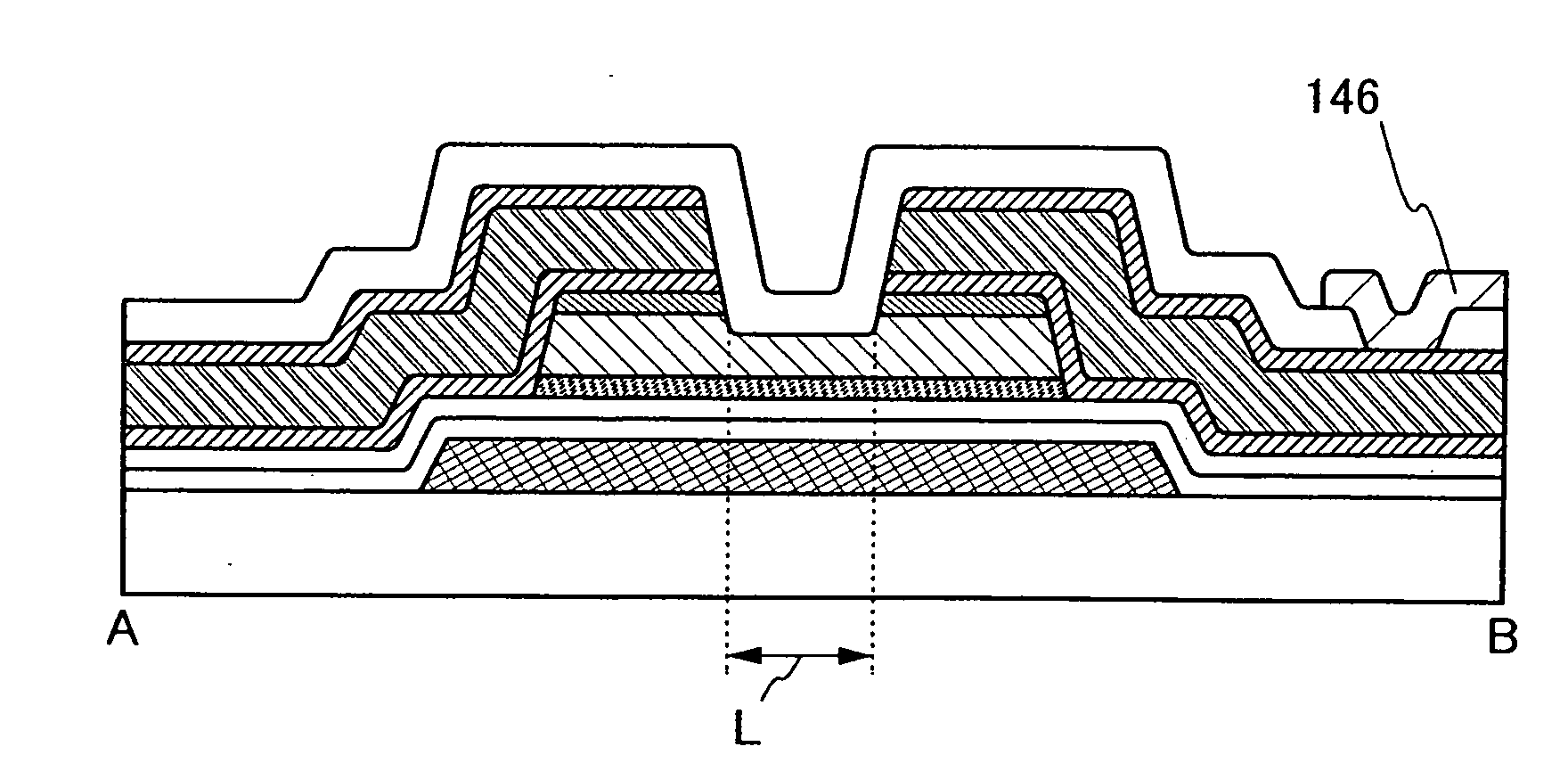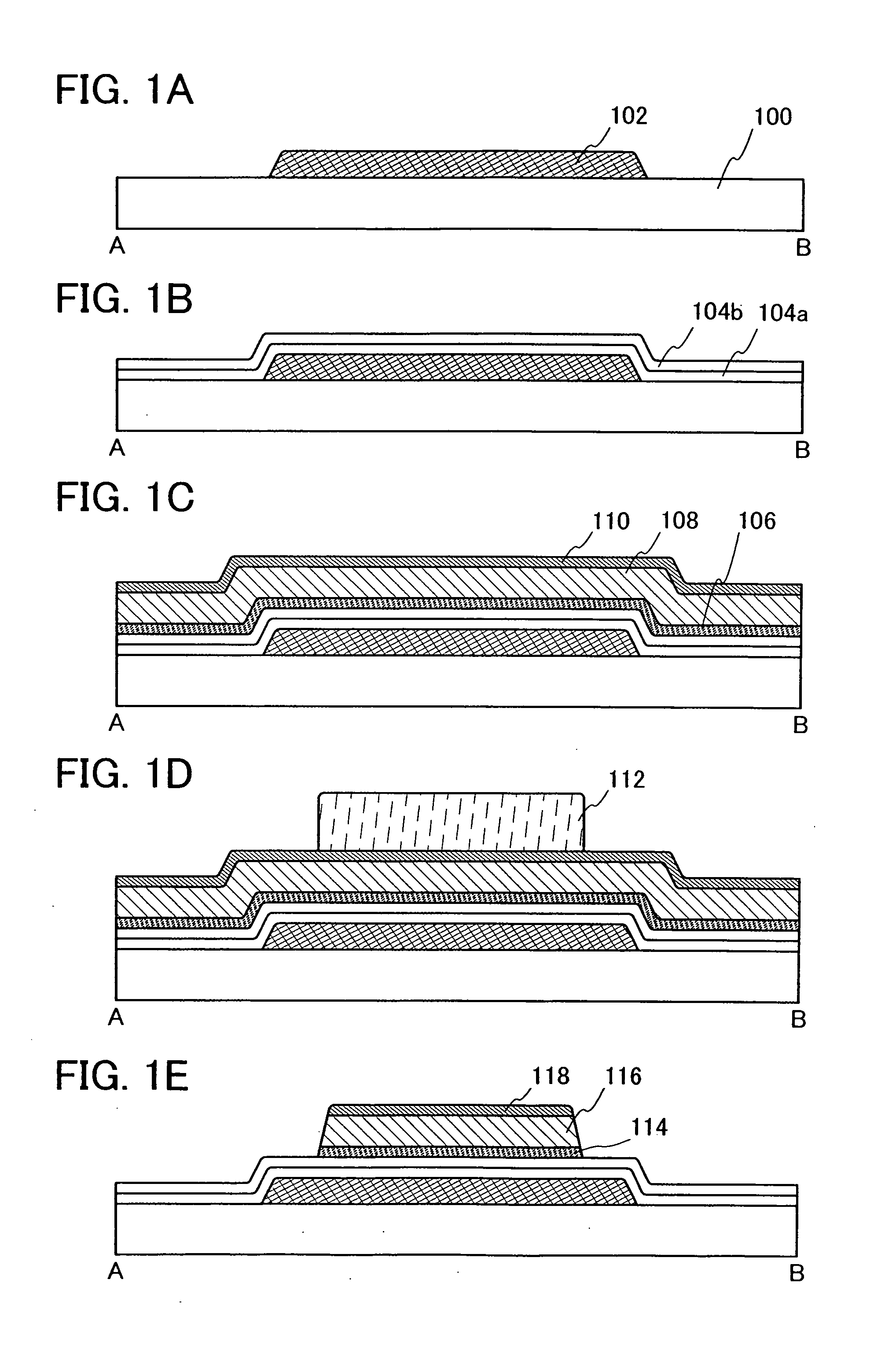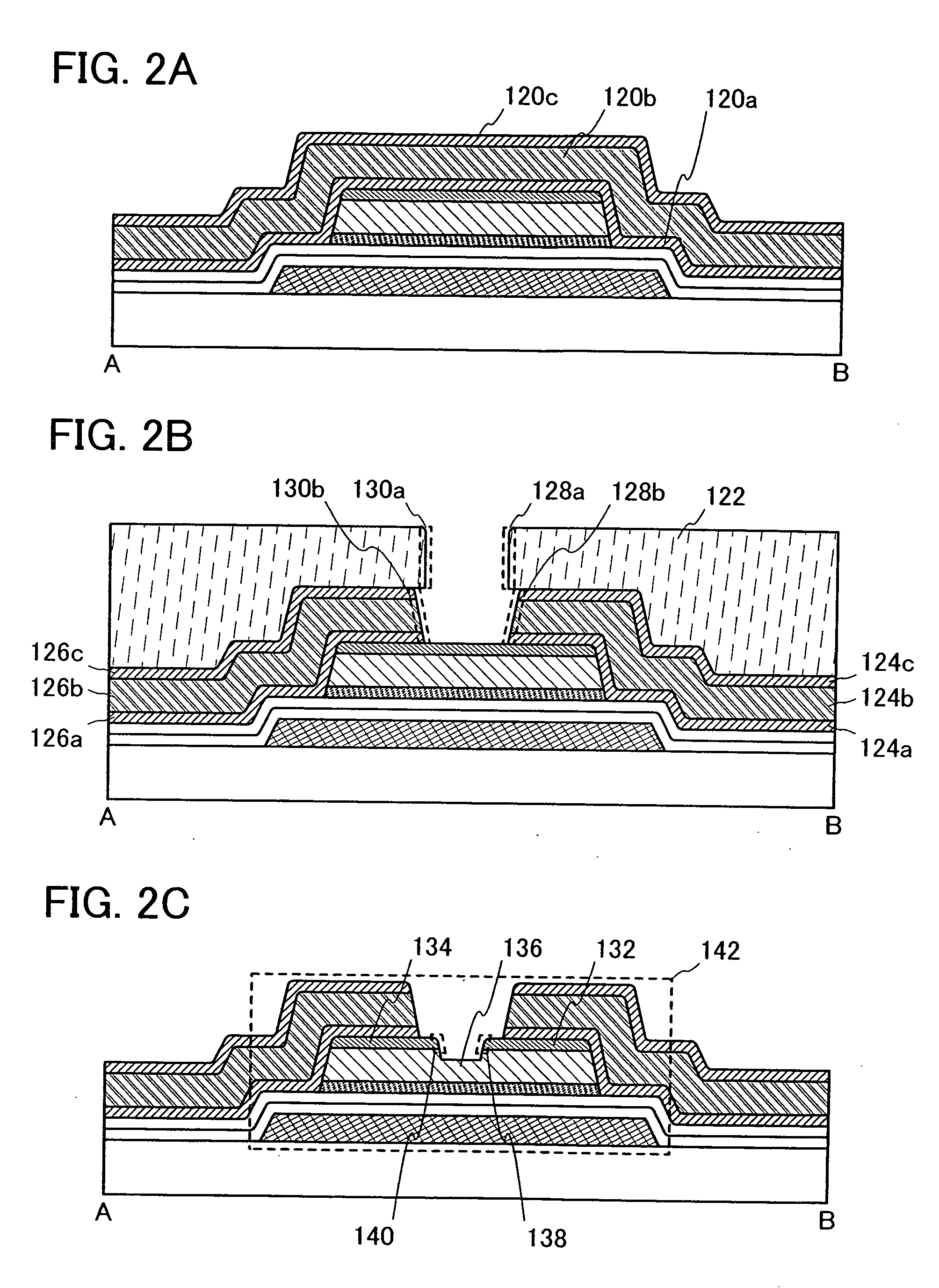Liquid crystal display device and electronic device
- Summary
- Abstract
- Description
- Claims
- Application Information
AI Technical Summary
Benefits of technology
Problems solved by technology
Method used
Image
Examples
embodiment mode 1
[0053]In this embodiment mode, a manufacturing process of a liquid crystal display device of the present invention, in particular, a manufacturing process of the thin film transistor is described with reference to FIGS. 1A to 1E, FIGS. 2A to 2C, FIGS. 3A to 3C, FIGS. 4A to 4D, FIGS. 5A to 5D, and FIGS. 6A and 6B. FIGS. 1A to 1E, FIGS. 2A to 2C, and FIGS. 3A to 3C are cross-sectional views of the manufacturing process. FIGS. 4A to 4D and FIGS. 5A to 5D are plan views of a connection region of the thin film transistor and a pixel electrode in one pixel. FIGS. 6A and 6B are a plan view and a cross-sectional view of a completed liquid crystal display device.
[0054]Note that various structures can be considered as a plan view structure. This embodiment mode describes typical structures, in which a channel formation region, a source region, and a drain region are arranged linearly (see FIGS. 4A to 4D), and in which a channel formation region and one of a source region and a drain region fo...
embodiment mode 2
[0112]In this embodiment, a manufacturing method of a transistor, in which a microcrystalline semiconductor layer is irradiated with laser beam, so that the crystallinity is improved, with reference to FIGS. 7A to 7D.
[0113]First, a gate electrode is formed over the substrate in the similar manner to Embodiment Mode 1. Then, a gate insulating layer is formed so as to cover a gate electrode (not shown). After that, a microcrystalline semiconductor layer is formed over a gate insulating layer 700 (see FIG. 7A).
[0114]In the above-described manner, when the microcrystalline semiconductor layer is formed over the gate insulating layer 700 by a plasma CVD method or the like, a region which contains many amorphous components (here, such a region is referred to as “an interface region 704”) is formed, in some cases, near the interface between the gate insulating layer 700 and a semiconductor layer 702. In the case where an ultra-thin microcrystalline semiconductor film with a thickness of ab...
embodiment mode 3
[0125]In this embodiment mode, details of a liquid crystal display device including the thin film transistor (hereinafter, also referred to as a “TFT”) shown in Embodiment Modes 1 and 2 is described with reference to FIG. 8, FIG. 9, FIG. 10, FIG. 11, FIG. 12, FIG. 13, FIG. 14, FIG. 15, FIG. 16, FIG. 17, FIG. 18, FIG. 19, FIG. 20, and FIG. 21. The thin film transistor used for the liquid crystal display device illustrated in FIG. 8, FIG. 9, FIG. 10, FIG. 11, FIG. 12, FIG. 13, FIG. 14, FIG. 15, FIG. 16, FIG. 17, FIG. 18, FIG. 19, FIG. 20, and FIG. 21 can be manufactured in the similar manner to the thin film transistor shown in Embodiment Modes 1 and 2.
[0126]First, liquid method crystal display device of a vertical alignment (VA) mode is described. The VA is a kind of mode in which alignment of liquid crystal molecules of a liquid crystal display panel is controlled. The VA liquid crystal display device is a mode in which the major axis of liquid crystal molecules is vertical to a pan...
PUM
 Login to View More
Login to View More Abstract
Description
Claims
Application Information
 Login to View More
Login to View More - R&D
- Intellectual Property
- Life Sciences
- Materials
- Tech Scout
- Unparalleled Data Quality
- Higher Quality Content
- 60% Fewer Hallucinations
Browse by: Latest US Patents, China's latest patents, Technical Efficacy Thesaurus, Application Domain, Technology Topic, Popular Technical Reports.
© 2025 PatSnap. All rights reserved.Legal|Privacy policy|Modern Slavery Act Transparency Statement|Sitemap|About US| Contact US: help@patsnap.com



